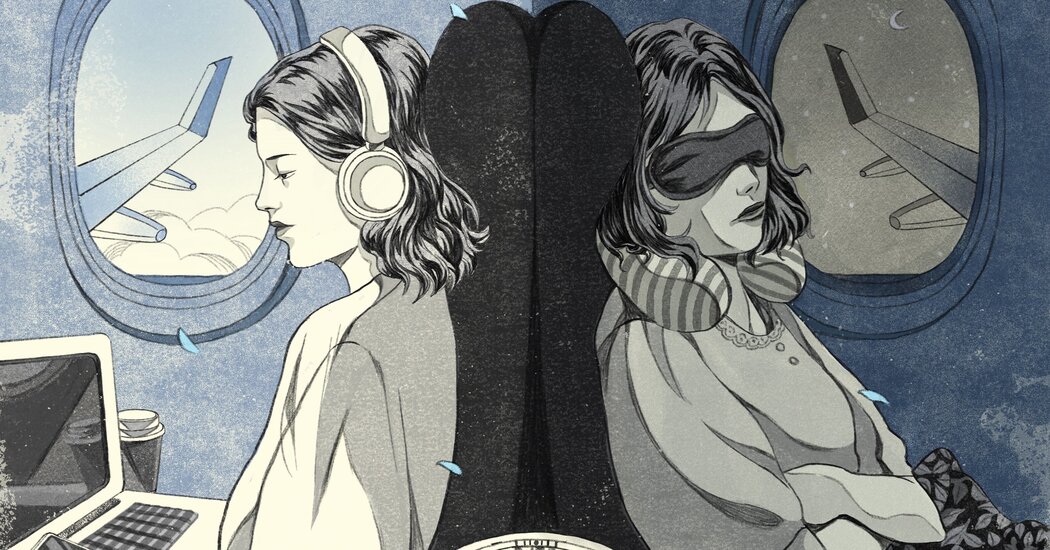Long-haul flights are generally considered to be those eight hours and over, while any that stretch past a grueling 16 hours are nicknamed “ultra long-haul.” The longest nonstop commercial flights currently available include New York to Singapore (18 hours and 50 minutes; 9,530 miles) and Perth, Australia, to London (17 hours and 45 minutes; 9,010 miles). Qantas Airways, Australia’s national airline, plans to operate two even longer direct flights in 2025: Sydney to London and Sydney to New York — routes that will take up to 20 hours.
For travelers, flying at 35,000 feet for an extended period of time comes with its own set of challenges, including little space for movement, dry cabin air and time zone changes.
Though extreme long-haul air travel never gets easier, there are some things you can do — before, during and after your flight — to make it slightly less terrible.
Jennifer Bagnall, 40, a communications executive who often flies between her home in Los Angeles and Sydney, believes reframing the experience in your mind is an essential first step.
“Instead of approaching it as a long stretch of time in a confined space without escape, I think about how it’s a long stretch of uninterrupted time with no responsibilities and where I can’t be contacted,” she said. “It’s so rare you get that.”
Pack your carry-on smartly and strategize early
You’ll most likely be checking your luggage, so your carry-on bag will need to be well equipped. As well as any items you’re going to use for entertainment, think ahead to what will help you feel the most comfortable. Packing a change of clothes (if there is a stopover, you may be able to find a shower in the airport) as well as a toothbrush and toothpaste will go a long way to helping you feel fresher during your journey. Make sure you’re wearing comfortable clothing and a pair of compression socks to combat swollen feet from so many hours with little physical activity.
“Wear a hoodie,” recommends Nikki Greenberg, 40, a futurist and innovation strategist from Sydney who frequently travels internationally for work. “It is cozy, warm, covers the ears (less noise) and eyes (less light for sleep), and creates a private cocoon environment.”
Find a way to sleep as much as possible
Do anything and everything you can to make sure you spend a large chunk of the time onboard asleep. Some travelers consider sleeping pills or melatonin supplements as must-haves, while eye shades and…
Click Here to Read the Full Original Article at NYT > Travel…
